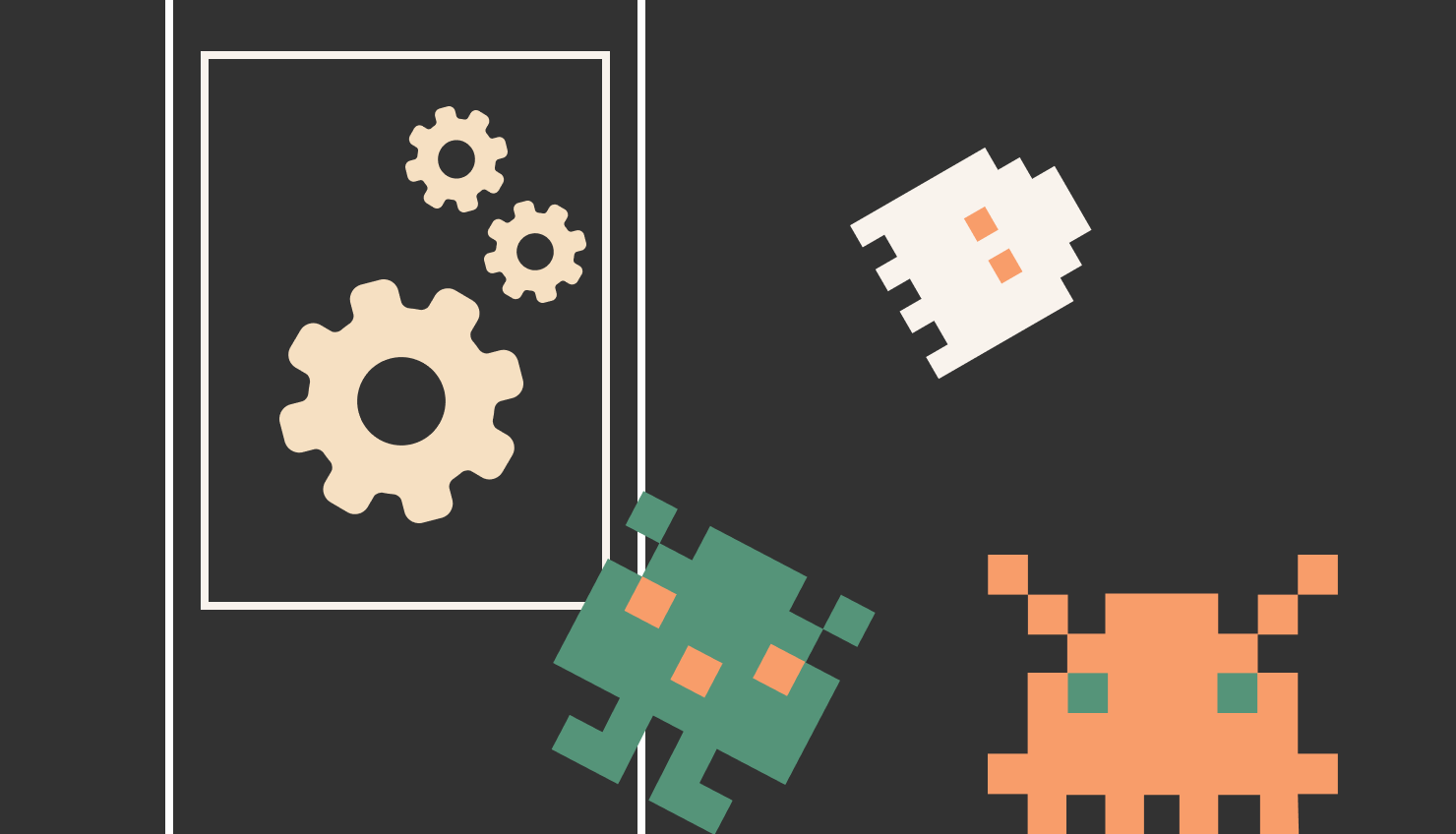As game-based microlearning gains popularity, all sorts of people have begun using this word, even if it does not qualify as microlearning.
It may sound fancy but it is based on a relatively simple premise. The truth is that we all have been microlearning without ever realizing that it will become a very popular way of learning. Microlearning is simply learning in bite-sized amounts. Learning becomes simpler and more manageable if you do it step by step. This is the rudimentary tenet of game-based microlearning.
Realizing that people are better off learning in small bits, instructors started creating courses that facilitate this learning paradigm. The instructional format is such that trainees can learn in small chunks rather than moving too fast and taking in too much information in one go. Thus, microlearning is the elixir for information overload and stress. Moving ahead too fast too soon and taking in way more information than what your brain can handle is the perfect recipe for heightened stress. You might think that you are moving fast and making good progress but the truth is that your efficiency is greatly declining. As you peruse material rapidly, you understand less. This cancels any gains from fast-paced reading. Escalated stress can make the problem even worse. The result is that your sessions are hardly productive and you are demotivated from learning owing to high stress.
Microlearning helps you learn one thing at a time. This is how learning should be done. With microlearning, you receive information in small amounts that your mind can easily handle. The materials look manageable, inviting, and simple instead of daunting and abstruse. You learn more gradually and thus improve your learning efficiency. Everything starts to make more sense.
The beauty of game-based microlearning is that you can pick up the pace whenever you need to. If you are understanding the information quickly, all you have to do is to flip through more quickly.
The advent of smartphones and tablets means that there is now an even greater need for game-based microlearning. Tablet and smartphone screens are small, which is why users will greatly benefit if their learning material is broken down into small chunks that can fit onto their small screens.
Benefits of Game-Based Microlearning
Game-based microlearning can purvey numerous benefits. It is a great way to format reference material for your smartphone so that you can study on the go. With your smartphone, you can even peruse material in bed for perfect comfort. Microlearning allows you to understand more and improve your learning efficiency so that you become more productive. Microlearning can deepen, consolidate, and reinforce the material that you have gone through. You are no longer drowning in a sea of information. Instead, each bit of information becomes identifiable and recognizable.
Important points can be emphasized to create maximum positive impact instead of getting lost and becoming anonymous in an ocean of interminable text. This is very important since most learning problems arise due to students losing out on key points and moving on. Material further ahead in the course may depend on these key missed points. Students will not be able to grasp this advanced material unless they can fathom key points that they moved through hastily. Microlearning helps students to get around this by accentuating highlighting key points so that nothing important is left behind.
But game-based microlearning goes way beyond presentation style. It is more than just presenting information in easily manageable amounts. This mode of learning also leverages the power of gaming for even better learning.
Why Game-Based Learning?
Many of us may find ourselves feeling resistant to learning at times. There could be several reasons for this reluctance. Many of us prefer to play video games instead of learning. Some don’t like learning by themselves. Others find the material to be far too dreary and dry. In many cases, the unappealing format and lack of multimedia is to blame. Game-based learning does away with all of these problems by leveraging the power of games to make learning fun, engaging, and stimulating.
We know intuitively that whenever something becomes more engaging, interesting, and stimulating we pay more attention and retain more information. On the other hand, if information feels dull, prosaic, and boring, then we won’t make progress no matter how hard we try to push ourselves.
Microlearning Gamification
The beauty of game-based learning is that motivating trainees, it helps them to learn effectively. Students no longer have to push themselves and learn against their will. It takes away resistance from learning. Instead of forcing themselves to cram information, students gain the passion they need to move quickly and effortlessly. With greater interest comes better learning. Game-based learning enthuses students so that they have the passion and motivation they need to learn meaningfully. They no longer have to do something that does not interest them. Having passion for what you are doing makes a massive difference, and game-based learning can ignite your passion so that you can pick up information with much greater ease.
Trainers and trainees know that game-based learning can help thanks to its high engagement factor. Compared to other traditional methods, the game-based approach excels and exceeds expectations due to superior engagement. The stimulating nature of games means that the game-based archetype will elicit a positive response from trainees. This high engagement level can alleviate resistance that trainees may feel towards learning. Instead of being tedious and mundane, learning suddenly becomes much more fun with gaming in the mix.
Even a simple story-based game can bolster the engagement factor. In fact, story-based text games are one of the oldest types of games. Gamers from the bygone era know how addictive these games are due to their intriguing storylines. Players go on playing to unravel the mystery and find out what happens at the very end. The suspense and numerous twists make for superb entertainment. This same approach can be leveraged to boost learning. As students progress through the course, the plot will keep unfolding. The curious mind will want to know what happens at the end and will in turn be highly motivated to progress quickly through the course. Thus, gamification in online learning can help deliver fantastic results for students and trainers.
Microlearning Enhances Retention
Microlearning is based on presenting information in small bits and pieces so that learners do not get overwhelmed – a major problem with traditional modes of presentation that rely on vast tracts of seemingly unending text. However, microlearning does not comprise disparate and unconnected bits of information. Each bit of information builds upon another so that you can get a smooth flow in discrete manageable sizes. Thus, microlearning is a very gentle mode of learning that is easy on the mind. This is imperative since huge amounts of information can quickly overwhelm and confuse students making them less willing to learn. Microlearning thus provides the ultimate learning experience since it eases a mentally intensive endeavor. This is how learning should be carried out. Learning step by step is the ideal way of learning.
By breaking down long and complicated concepts into small bits that are easy to assimilate, microlearning can greatly enhance learning.
The Confluence of Microlearning and Game-Based Learning
Both microlearning and game-based learning are highly efficacious in their own right. But when taken together, their benefits can increase tremendously.
While microlearning eases the learning process, the game-based approach boosts motivation. The combination of ease and motivation can be the perfect recipe for highly effective learning.
The game-based microlearning approach ensures that students can learn more effortlessly with a much higher motivation level. Thus, even the most reluctant pupils will find that they have the motivation they need to excel. Comprehending difficult concepts will become much easier and boost motivation thanks to the inherent simplicity of microlearning. Games can stimulate students even further so that their motivation level rises to new heights. Game-based microlearning is thus gaining widespread acceptance and will soon be the norm rather than a novel concept.
Game-based microlearning is also perfectly amenable to distance learning, which is now paramount owing to the covid-19 outbreak. Traditional classroom learning is no longer advisable owing to the high risk of infection. In such cases, trainers can turn to game-based microlearning as a superior alternative to conventional learning methods.
With game-based microlearning, students in far-flung locations can study effectively since this approach is highly suited to distance learning. This approach may be better than conventional methods since students will love the inherent ease and stimulating nature of the game-based microlearning approach. Thus, if you feared that remote learning would disrupt learning then you may be in for a pleasant surprise. Far from impeding learning, game-based microlearning may help to improve outcomes, bolster student engagement, and facilitate learning.
Mobile Game-Based Microlearning
Smartphones are now the new computers. long gone are the days when cell phones were used just for calling and texting. The demanding consumer of today expects the smartphone to accomplish everything that PCs and laptops can. The truth is that smartphones are highly versatile devices that have nearly the same functionality as computers and laptops and with advancements in technology are now approaching their high-performance levels.
Thus, it is smart to use smartphones for learning. You can carry your smartphone anywhere you like due to which you can carry out learning even while you are traveling or waiting outside. The smartphone frees you up and empowers you to learn anywhere you choose, unlike PCs and laptops.
Game-based microlearning is particularly well suited to smartphones. This learning model is ideal for smartphones since the bite-sized presentation of information is perfect for relatively small screens that smartphones have. With game-based microlearning, small screens need not impede learning. Instead of being a liability, small screen sizes can become an asset since they are sized perfectly to present small discrete bits of information.
Since Game-based microlearning is well-suited to mobile phones; it is the ideal way to engage students. We are perennially checking out smartphones and wish to do everything we like using our smartphones. Thus, leveraging a learning platform that works effectively on smartphones is a smart move. Game-based microlearning apps installed on smartphones can help to increase learner motivation, engagement, and interest. Since information is presented in compact discrete sizes, users can pick up something new and make progress each time they check their smartphones.
Students will be more accepting of learning methods that work on their smartphones. That being said, game-based microlearning is equally suited to PCs and laptops.
Data and Analytics
Since game-based microlearning can be done on smartphones, laptops, and computers, they can provide loads of data and analytics that can provide insights into what works and what doesn’t. Using data collected from these learning platforms, trainers can hone their courses to make them more effective and remediate deficiencies.
Using analytics, trainers can easily check up on student progress. Thus, the data derived will prove useful for establishing leaderboards that can rank students according to progress and results. This is certain to make learning highly competitive in addition to being easier and more engaging. The competitive spirit will encourage students to go the extra mile and surpass expectations. Thus, students can complete their courses in shorter time frames and show much better performance.
Conclusion
Game-based microlearning is a game-changer. This mode of learning has introduced a paradigm shift for easier and more interesting learning that will benefit learners and trainers alike.







